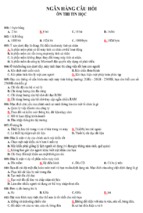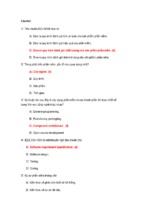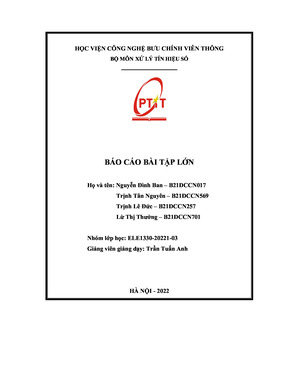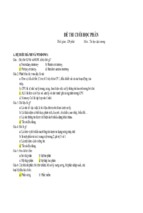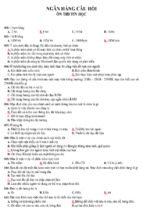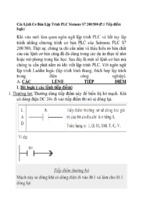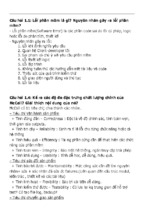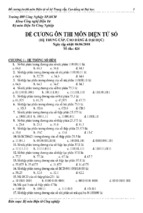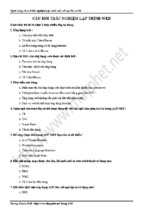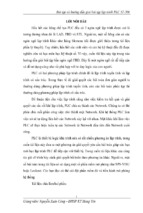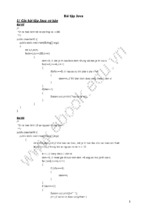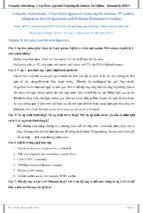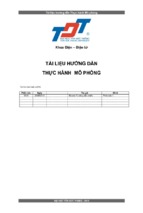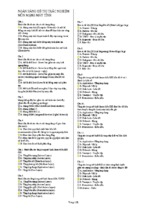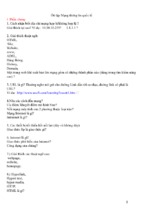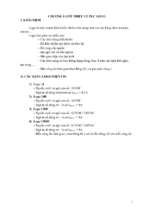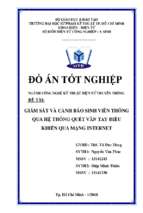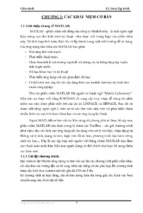TEAM LinG
Beginning Algorithms
Beginning Algorithms
Simon Harris and James Ross
Beginning Algorithms
Published by
Wiley Publishing, Inc.
10475 Crosspoint Boulevard
Indianapolis, IN 46256
www.wiley.com
Published 2006 by Wiley Publishing, Inc., Indianapolis, Indiana
Published simultaneously in Canada
ISBN-13: 978-0-7645- 9674-2
ISBN-10: 0-7645-9674-8
Manufactured in the United States of America
10 9 8 7 6 5 4 3 2 1
1MA/RS/RQ/QV/IN
Library of Congress Cataloging-in-Publication Data:
Harris, Simon, 1972Beginning algorithms / Simon Harris and James Ross.
p. cm.
Includes index.
ISBN-13: 978-0-7645-9674-2 (paper/website)
ISBN-10: 0-7645-9674-8 (paper/website)
1. Computer algorithms. I. Ross, James, 1968- II. Title.
QA76.9.A43H376 2005
005.1--dc22
2005022374
No part of this publication may be reproduced, stored in a retrieval system or transmitted in any form or by any
means, electronic, mechanical, photocopying, recording, scanning or otherwise, except as permitted under Sections
107 or 108 of the 1976 United States Copyright Act, without either the prior written permission of the Publisher, or
authorization through payment of the appropriate per-copy fee to the Copyright Clearance Center, 222 Rosewood
Drive, Danvers, MA 01923, (978) 750-8400, fax (978) 646-8600. Requests to the Publisher for permission should be
addressed to the Legal Department, Wiley Publishing, Inc., 10475 Crosspoint Blvd., Indianapolis, IN 46256, (317)
572-3447, fax (317) 572-4355, or online at http://www.wiley.com/go/permissions.
LIMIT OF LIABILITY/DISCLAIMER OF WARRANTY: THE PUBLISHER AND THE AUTHOR MAKE NO REPRESENTATIONS OR WARRANTIES WITH RESPECT TO THE ACCURACY OR COMPLETENESS OF THE CONTENTS OF THIS WORK AND SPECIFICALLY DISCLAIM ALL WARRANTIES, INCLUDING WITHOUT
LIMITATION WARRANTIES OF FITNESS FOR A PARTICULAR PURPOSE. NO WARRANTY MAY BE CREATED OR EXTENDED BY SALES OR PROMOTIONAL MATERIALS. THE ADVICE AND STRATEGIES CONTAINED HEREIN MAY NOT BE SUITABLE FOR EVERY SITUATION. THIS WORK IS SOLD WITH THE
UNDERSTANDING THAT THE PUBLISHER IS NOT ENGAGED IN RENDERING LEGAL, ACCOUNTING, OR
OTHER PROFESSIONAL SERVICES. IF PROFESSIONAL ASSISTANCE IS REQUIRED, THE SERVICES OF A
COMPETENT PROFESSIONAL PERSON SHOULD BE SOUGHT. NEITHER THE PUBLISHER NOR THE
AUTHOR SHALL BE LIABLE FOR DAMAGES ARISING HEREFROM. THE FACT THAT AN ORGANIZATION
OR WEBSITE IS REFERRED TO IN THIS WORK AS A CITATION AND/OR A POTENTIAL SOURCE OF FURTHER INFORMATION DOES NOT MEAN THAT THE AUTHOR OR THE PUBLISHER ENDORSES THE INFORMATION THE ORGANIZATION OR WEBSITE MAY PROVIDE OR RECOMMENDATIONS IT MAY MAKE.
FURTHER, READERS SHOULD BE AWARE THAT INTERNET WEBSITES LISTED IN THIS WORK MAY HAVE
CHANGED OR DISAPPEARED BETWEEN WHEN THIS WORK WAS WRITTEN AND WHEN IT IS READ.
For general information on our other products and services please contact our Customer Care Department within
the United States at (800) 762-2974, outside the United States at (317) 572-3993 or fax (317) 572-4002.
Trademarks: Wiley, the Wiley logo, Wrox, the Wrox logo, Programmer to Programmer, and related trade dress are
trademarks or registered trademarks of John Wiley & Sons, Inc. and/or its affiliates, in the United States and other
countries, and may not be used without written permission. All other trademarks are the property of their respective owners. Wiley Publishing, Inc., is not associated with any product or vendor mentioned in this book.
Wiley also publishes its books in a variety of electronic formats. Some content that appears in print may not be
available in electronic books.
Credits
Executive Editor
Project Coordinators
Carol Long
Erin Smith
Ryan Steffen
Consulting Editor
Jon Eaves
Media Development Specialists
Development Editors
Angela Denny
Kit Malone
Travis Silvers
Ami Frank Sullivan
Sydney Jones
Graphics and Production Specialists
Mary Beth Wakefield
Jonelle Burns
Lauren Goddard
Denny Hager
Joyce Haughey
Jennifer Heleine
Barbara Moore
Melanee Prendergast
Alicia South
Production Manager
Quality Control Technicians
Tim Tate
John Greenough
Leeann Harney
Production Editor
William A. Barton
Copy Editor
Luann Rouff
Editorial Manager
Vice President & Executive Group Publisher
Richard Swadley
Proofreading
TECHBOOKS Production Services
Vice President and Executive Publisher
Joseph B. Wikert
Indexing
Valerie Haynes Perry
About the Authors
Simon Harris started writing animated sprites on a Commodore 64 in primary school. After a break of
many years, he taught himself 80x86 and IBM System/370 assembler and started working professionally. Since then he has moved from assembler to C, C++, and, of course, Java. He believes a fundamental
understanding and appreciation of algorithms is essential to developing good software; and since starting his own company, RedHill Consulting, he has managed to make a living discussing and demonstrating software development practices and techniques to anyone who will listen.
In his more than 15 years of development experience, James Ross has ranged from building packaged
products to large enterprise systems to research into compilers and languages. In recent years, he has
become a code quality fanatic and agile methods specialist, particularly with test-driven development.
He works as a consultant for ThoughtWorks, the world’s leading agile software development company. He
is currently leading the development of a large J2EE project in the insurance industry in Melbourne,
Australia. He lives with his wife and family in Melbourne.
Acknowledgments
From Simon Harris: First and foremost, a mighty big thank-you to Jon Eaves for handing us this opportunity, and to James, whose skill and professionalism never cease to amaze me. I certainly couldn’t have
finished this book without either of you.
Many thanks also to all those who read the draft chapters and provided feedback: Andrew Harris, Andy
Trigg, Peter Barry, Michael Melia, and Darrell Deboer (I’m sure I’ve missed some). I hope you find the
final product does justice to your efforts.
I also want to acknowledge my brother Tim for listening to my ranting at all hours of the night and day,
and Kerri Rusnak and her family for feeding me waffles and cups of tea, not to mention my Aikido students for continuing to turn up and practice during my various absences.
Finally, I’d like to extend my sincerest gratitude to everyone at Wiley who persisted with the book and
to all of my other friends and family who continued to prod and encourage me, especially when I
thought the sky was falling. It’s certainly been a learning experience.
From James Ross: First of all, I’d like to thank Simon for letting me come along for the ride on his first
book. It was a great opportunity to write seriously for the first time and it’s always a pleasure and an
education to work with Simon. We heard a lot of stories about author teams who destroy their relationship while collaborating on a book, but I’m glad to say we avoided that trap.
I’d also like to thank all the folks at Wiley who were extremely understanding with two newbie
authors and guided us unerringly towards the goal—especially Ami Sullivan and Carol Long. It is
much appreciated.
To all the supergeeks at ThoughtWorks who have made my professional life such a pleasure over the
past few years, especially Andy Trigg, who’s been my programming pal since we wrote our first unit
tests together, and who reviewed all the chapters I wrote with incredible attention to detail and insight,
and Jon Eaves, the technical editor on this book, who never fails to make me laugh and teach me something. Simon Stewart also helped with great feedback on early drafts, and Gregor Hohpe and Martin
Fowler provided the encouragement and inspiration to actually keep typing all those long nights.
Speaking of the long nights, I can honestly say that this book would not have been possible (at least my
chapters!) without the love and understanding of the ladies in my life—Catherine, who is the sun in our
little solar system; Jessica; Ruby; and little Ella, who was six months old when I signed on for this project
and who slept at least 12 hours every single night while it was being written. You may never read it,
baby, but I’ll always think of you when I pick it up!
Contents
Acknowledgments
Introduction
Chapter 1: Getting Started
Defining Algorithms
Understanding Complexity in Relation to Algorithms
Understanding Big-O Notation
Constant Time: O(1)
Linear Time: O(N)
Quadratic Time: O(N2)
Logarithmic Time: O(log N) and O(N log N)
Factorial Time: O(N!)
Unit Testing
What Is Unit Testing?
Why Unit Testing Is Important
A JUnit Primer
Test-Driven Development
Summary
Chapter 2: Iteration and Recursion
Performing Calculations
Processing Arrays
Using Iterators to Overcome Array-based Problems
Iterator Operations
The Iterator Interface
The Iterable Interface
Iterator Idioms
Standard Iterators
Recursion
Recursive Directory Tree Printer Example
Anatomy of a Recursive Algorithm
The Base Case
The General Case
Summary
Exercises
ix
xix
1
1
3
4
6
6
6
8
8
9
9
11
11
14
14
15
16
18
18
19
20
20
21
21
35
37
40
40
41
41
41
Contents
Chapter 3: Lists
Understanding Lists
Testing Lists
Implementing Lists
An Array List
A Linked List
Summary
Exercises
Chapter 4: Queues
43
43
46
58
59
66
74
74
75
Understanding Queues
75
Queue Operations
The Queue Interface
76
77
A First-In-First-Out Queue
Implementing the FIFO Queue
Blocking Queues
Example: A Call Center Simulator
Running the Application
Summary
Exercises
Chapter 5: Stacks
Stacks
The Tests
Implementation
Example: Implementing Undo/Redo
Testing Undo/Redo
Summary
Chapter 6: Basic Sorting
77
81
82
86
95
96
96
97
97
99
102
105
106
114
115
The Importance of Sorting
Sorting Fundamentals
Understanding Comparators
115
116
116
Comparator Operations
The Comparator Interface
Some Standard Comparators
117
117
117
Working with the Natural Comparator
Working with the Reverse Comparator
Understanding Bubble Sort
xii
117
119
121
Contents
The ListSorter Interface
Testing AbstractListSorter
124
124
Working with a Selection Sort
Understanding Insertion Sort
Understanding Stability
Comparing the Basic Sorting Algorithms
128
133
138
139
CallCountingListComparator
ListSorterCallCountingTest
Understanding the Algorithm Comparison
139
140
143
Summary
Exercises
144
144
Chapter 7: Advanced Sorting
Understanding
Understanding
Understanding
Understanding
the Shellsort Algorithm
Quicksort
the Compound Comparator and Stability
the Mergesort Algorithm
Merging
The mergesort Algorithm
Comparing the Advanced Sorting Algorithms
Summary
Exercises
Chapter 8: Priority Queues
Understanding Priority Queues
A Simple Priority Queue Example
Working with Priority Queues
Understanding the Unsorted List Priority Queue
Understanding the Sorted List Priority Queue
Understanding Heap-ordered Priority Queues
Sink or Swim
Comparing the Priority Queue Implementations
Summary
Exercises
Chapter 9: Binary Searching and Insertion
Understanding Binary Searching
145
145
151
157
160
160
162
169
172
172
173
174
174
179
182
184
186
188
194
198
198
199
199
Binary Search Approaches
A List Searcher
202
202
Recursive Binary Searcher
205
xiii
Contents
Iterative Binary Searcher
Assessing the List Searcher’s Performance
208
210
Linear Searching for Comparison
Tests for Performance
210
212
Understanding Binary Insertion
216
A List Inserter
Assessing Performance
Summary
Chapter 10: Binary Search Trees
Understanding Binary Search Trees
Minimum
Maximum
Successor
Predecessor
Search
Insertion
Deletion
In-order Traversal
Pre-order Traversal
Post-order Traversal
Balancing
Testing and Implementing a Binary Search Tree
Assessing Binary Search Tree Performance
Summary
Exercises
Chapter 11: Hashing
Understanding Hashing
Working with Hashing
Linear Probing
Bucketing
Assessing Performance
Summary
Exercises
Chapter 12: Sets
Understanding Sets
Testing Set Implementations
xiv
217
220
224
225
226
227
227
227
227
228
230
232
235
235
235
236
238
261
264
264
265
265
272
275
281
285
291
292
293
293
297
Contents
A List Set
A Hash Set
A Tree Set
Summary
Exercises
Chapter 13: Maps
303
305
309
315
316
317
Understanding Maps
Testing Map Implementations
A List Map
A Hash Map
A Tree Map
Summary
Exercises
317
322
329
333
337
343
344
Chapter 14: Ternary Search Trees
345
Understanding Ternary Search Trees
Searching for a Word
Inserting a Word
Prefix Searching
Pattern Matching
Putting Ternary Search Trees into Practice
Crossword Helper Example
Summary
Exercise
Chapter 15: B-Trees
345
346
350
351
353
357
370
374
374
375
Understanding B-Trees
Putting B-Trees into Practice
Summary
Exercises
375
381
392
393
Chapter 16: String Searching
395
A Generic String Searcher Interface
A Generic Test Suite
A Brute-Force Algorithm
The Boyer-Moore Algorithm
Creating the Tests
Implementing the Algorithm
395
397
400
402
404
404
xv
Contents
A String Match Iterator
Comparing the Performance
Measuring Performance
How They Compare
Summary
Chapter 17: String Matching
Understanding Soundex
Understanding Levenshtein Word Distance
Summary
Chapter 18: Computational Geometry
A Quick Geometry Refresher
Coordinates and Points
Lines
Triangles
Finding the Intersection of Two Lines
Slope
Crossing the y Axis
408
409
409
413
413
415
415
426
435
437
437
437
438
439
440
441
442
Finding the Intersection Point
Finding the Closest Pair of Points
Summary
Exercises
443
457
467
467
Chapter 19: Pragmatic Optimization
469
Where Optimization Fits In
Understanding Profiling
The FileSortingHelper Example Program
Profiling with hprof
Profiling with JMP
Understanding Optimization
Putting Optimization into Practice
Summary
469
470
471
475
477
479
480
487
Appendix A: Further Reading
489
Appendix B: Resources
491
xvi
Contents
Appendix C: Bibliography
493
Appendix D: Answers to Exercises
495
Index
541
xvii
Introduction
Welcome to Beginning Algorithms, a step-by-step introduction to computing algorithms for the real world.
Developers use algorithms and data structures every day of their working lives. Having a good understanding of these algorithms and knowledge of when to apply them is essential to producing software
that not only works correctly, but also performs efficiently.
This book aims to explain those algorithms and data structures most commonly encountered in day-today software development, while remaining at all times practical, concise, and to the point, with little or
no verbiage to distract from the core concepts and examples.
Who Should Read This Book
The ideal reader of this book is someone who develops applications, or is just starting to do so, and who
wants to understand algorithms and data structures. This might include programmers; developers; software engineering students; information systems students; and computer science students.
While this book assumes you have an understanding of computer programming in general, it is also
hoped that if you took away the code, you could still read the book cover to cover and follow along—
albeit at a largely conceptual level. For this reason, team leaders, architects, and even business analysts
might also benefit.
Prerequisite Knowledge
As the code examples are all written in the Java programming language, a working knowledge of Java is
likely necessary, as is a familiarity with the standard Java libraries—and with the java.lang package in
particular. Also necessary is an understanding of arrays, loops, and so on, and, of course, how to create,
compile, and run Java classes.
Over and above the prerequisites mentioned, there is no particular requirement that you have any
knowledge of the data structures or the algorithms contained herein.
What You Will Learn
In these pages, you will find detailed explanations, some implementations, example uses, and exercises,
all designed to build your understanding to a point where you can use this knowledge in the real world.
The examples given are rarely, if ever, academic in nature. Very careful consideration has been given
in each chapter to present you with code that, in most cases, could be used in real-world applications,
immediately.
- Xem thêm -

